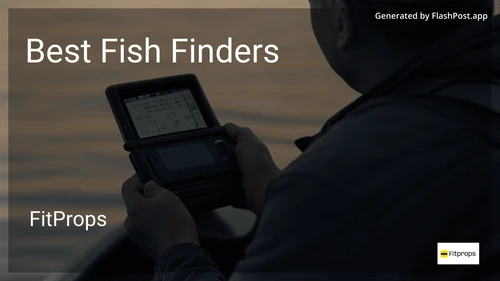Best Fish Finders to Buy in December 2025
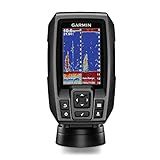
Garmin 010-01550-00 Striker 4 with Transducer, 3.5" GPS Fishfinder with Chirp
- HIGH-FREQUENCY SONAR: NEAR-PHOTOGRAPHIC IMAGES OF FISH AND STRUCTURES.
- USER-FRIENDLY DESIGN: SIMPLE INTERFACE AND EASY INSTALLATION OPTIONS.
- ADVANCED CHIRP TECHNOLOGY: ENHANCED TARGET SEPARATION FOR BETTER FISHING.


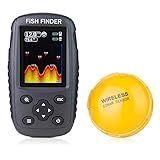
Venterior Portable Rechargeable Fish Finder Wireless Sonar Sensor Fishfinder Depth Locator with Fish Size, Temperature, Bottom Contour, Color Display
- WIRELESS CONVENIENCE: CASTABLE TRANSDUCER-NO HEAVY CABLES NEEDED!
- VERSATILE DISPLAY: CLEAR COLOR SCREEN FOR DAY OR NIGHT FISHING.
- EASY INSTALLATION: NO DRILLING REQUIRED; SIMPLY CAST AND FISH!


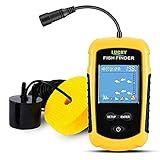
LUCKY Kayak Portable Fish Depth Finder Water Handheld Fish Finder Sonar Castable Kayak Boat Fishfinder Transducer Fishing LCD Display FFC1108
-
PORTABLE & USER-FRIENDLY: COMPACT DESIGN AND NECK STRAP FOR EASY HANDLING.
-
REAL-TIME ALERTS: GET ALARMS FOR FISH AND SCHOOLS ON THE MOVE.
-
VERSATILE DEPTH DETECTION: DETECT DEPTHS FROM 3FT TO 328FT IN VARIOUS WATERS.


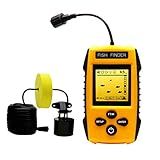
Yoocylii Handheld Fish Finder Portable Fishing Kayak Fishfinder Fish Depth Finder Fishing Gear with Sonar Transducer and LCD Display
- ACCURATE SONAR TECH: DETECTS FISH SIZE, DEPTH, AND BOTTOM STRUCTURE EASILY.
- PORTABLE DESIGN: WEARABLE WITH NECK STRAP; FITS IN TACKLE BOX EASILY.
- USER-FRIENDLY: SIMPLE TOSS-AND-TURN-ON FOR INSTANT FISHING INSIGHTS.


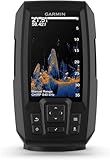
Garmin Striker Vivid 4cv, Easy-to-Use 4-inch Color Fishfinder and Sonar Transducer, Vivid Scanning Color Palettes - 010-02550-00
- VIVID SONAR PALETTES FOR CLEAR FISH AND STRUCTURE VISIBILITY.
- HIGH-SENSITIVITY GPS TO MARK WAYPOINTS AND MONITOR SPEED.
- BUILT-IN QUICKDRAW CONTOURS FOR EASY MAPPING AND NAVIGATION.


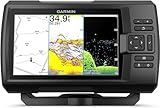
Garmin Striker Vivid 7cv, U.S. with GT20-TM Transducer - Easy-to-Use 7-inch Color Fishfinder and Sonar Transducer, Vivid Scanning Sonar Color Palettes (010-02552-00)
- VIVID 7” COLOR DISPLAY FOR EASY FISH AND STRUCTURE IDENTIFICATION.
- BUILT-IN GPS WITH WAYPOINTS AND ROUTE PLANNING FOR EXPERT NAVIGATION.
- WI-FI CONNECTIVITY FOR SMART NOTIFICATIONS AND QUICKDRAW MAPPING ACCESS.


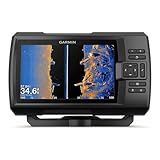
Garmin Striker Vivid 7sv, Easy-to-Use 7-inch Color Fishfinder and Sonar Transducer, Vivid Scanning Sonar Color Palettes (010-02553-00)
- EASY-TO-USE 7” COLOR DISPLAY WITH VIVID SONAR FOR CRYSTAL-CLEAR VIEWING.
- HIGH-SENSITIVITY GPS FOR WAYPOINT MARKING AND ROUTE PLANNING.
- WI-FI CONNECTIVITY FOR SMART NOTIFICATIONS AND ACCESS TO QUICKDRAW COMMUNITY.


Fish finders have become an essential tool for both amateur anglers and professional fishermen alike. These devices enhance your fishing experience by identifying fish locations, understanding underwater conditions, and ultimately increasing your chances of a successful catch. In this guide, we will delve into what fish finders are, how they work, and the factors you should consider when choosing the best fish finder for your needs.
What is a Fish Finder?
A fish finder is an electronic device that uses sonar technology to detect fish underwater. It sends sound waves down into the water; when the waves hit an object such as a fish, they bounce back up to the surface. The fish finder then interprets these waves and displays the information on a screen, allowing you to visualize where fish are in relation to your boat.
How Do Fish Finders Work?
Fish finders operate using sonar (Sound Navigation and Ranging) technology. The essential components include:
- Transducer: This device emits and receives sonar waves, acting as the “eyes” of the fish finder.
- Display Unit: Where interpreted sonar data is shown, allowing anglers to view underwater structures and fish locations.
When choosing a fish finder, it's crucial to understand these components as they directly impact the device's performance.
Key Features to Look for in a Fish Finder
Choosing the best fish finder involves several key considerations. Here’s what you should look for when making your selection:
1. Type of Display
The display is critical for interpreting the underwater environment. Consider:
- Resolution: Higher resolution displays offer clearer images.
- Size: Larger screens make it easier to view details.
- Color vs. Greyscale: Color displays can better distinguish fish from other objects.
2. Sonar Technology
Different types of sonar can affect how well a fish finder performs:
- Traditional Sonar: Provides a single view beneath the boat.
- CHIRP Sonar: Offers better clarity and resolution by sending a continuous range of frequencies.
- Down Imaging and Side Imaging: Provide detailed images of the structures below and beside your boat, respectively.
3. Frequency
The sonar frequency affects depth capability and image clarity:
- Dual-Frequency: Combines high and low frequencies for both deep and shallow waters.
- Higher Frequencies: Give better resolution but are limited in depth.
- Lower Frequencies: Suitable for deeper waters.
4. Power Output
Measured in watts, power determines how deep the sonar waves can penetrate. More power is suitable for deep-water fishing, whereas lower power works fine in shallow waters.
5. GPS Functionality
Integrated GPS can be beneficial for:
- Marking Spots: Save fishing hotspots and return to them.
- Navigating Safely: Avoid hazards and plan your route efficiently.
6. Portability
If you plan to use your fish finder in multiple locations, consider a portable model. These are ideal for anglers who fish from various boats or need to carry their device easily.
Choosing the Right Fish Finder for You
When selecting a fish finder, consider your specific fishing environment and requirements:
- Type of Water Body: Depth, clarity, and size dictate the type of sonar and power needed.
- Fishing Style: Whether you fish from a boat, kayak, or the shore can impact your choice.
- Budget: Price can vary widely; it's essential to balance cost with the features that are most important to you.
Conclusion
Selecting the best fish finder requires understanding the different technologies and features available. By considering the type of display, sonar technology, frequency, power, GPS functionality, and portability, you can find a fish finder that enhances your fishing trips effectively. Equip yourself with the right information, and you're on your way to maximizing your fishing success and enjoyment.
